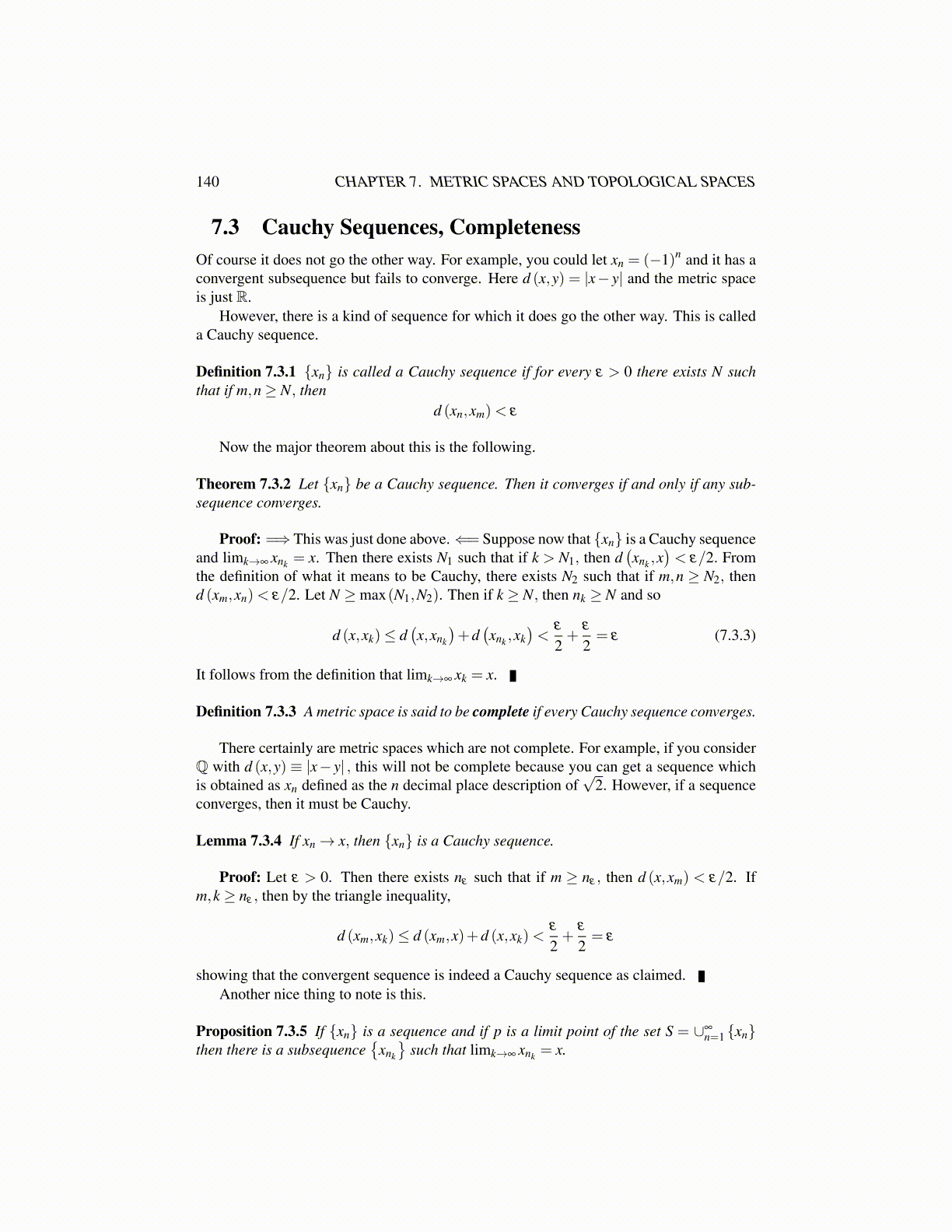
140 CHAPTER 7. METRIC SPACES AND TOPOLOGICAL SPACES
7.3 Cauchy Sequences, CompletenessOf course it does not go the other way. For example, you could let xn = (−1)n and it has aconvergent subsequence but fails to converge. Here d (x,y) = |x− y| and the metric spaceis just R.
However, there is a kind of sequence for which it does go the other way. This is calleda Cauchy sequence.
Definition 7.3.1 {xn} is called a Cauchy sequence if for every ε > 0 there exists N suchthat if m,n≥ N, then
d (xn,xm)< ε
Now the major theorem about this is the following.
Theorem 7.3.2 Let {xn} be a Cauchy sequence. Then it converges if and only if any sub-sequence converges.
Proof: =⇒ This was just done above.⇐= Suppose now that {xn} is a Cauchy sequenceand limk→∞ xnk = x. Then there exists N1 such that if k > N1, then d
(xnk ,x
)< ε/2. From
the definition of what it means to be Cauchy, there exists N2 such that if m,n ≥ N2, thend (xm,xn)< ε/2. Let N ≥max(N1,N2). Then if k ≥ N, then nk ≥ N and so
d (x,xk)≤ d(x,xnk
)+d(xnk ,xk
)<
ε
2+
ε
2= ε (7.3.3)
It follows from the definition that limk→∞ xk = x.
Definition 7.3.3 A metric space is said to be complete if every Cauchy sequence converges.
There certainly are metric spaces which are not complete. For example, if you considerQ with d (x,y) ≡ |x− y| , this will not be complete because you can get a sequence whichis obtained as xn defined as the n decimal place description of
√2. However, if a sequence
converges, then it must be Cauchy.
Lemma 7.3.4 If xn→ x, then {xn} is a Cauchy sequence.
Proof: Let ε > 0. Then there exists nε such that if m ≥ nε , then d (x,xm) < ε/2. Ifm,k ≥ nε , then by the triangle inequality,
d (xm,xk)≤ d (xm,x)+d (x,xk)<ε
2+
ε
2= ε
showing that the convergent sequence is indeed a Cauchy sequence as claimed.Another nice thing to note is this.
Proposition 7.3.5 If {xn} is a sequence and if p is a limit point of the set S = ∪∞n=1 {xn}
then there is a subsequence{
xnk
}such that limk→∞ xnk = x.